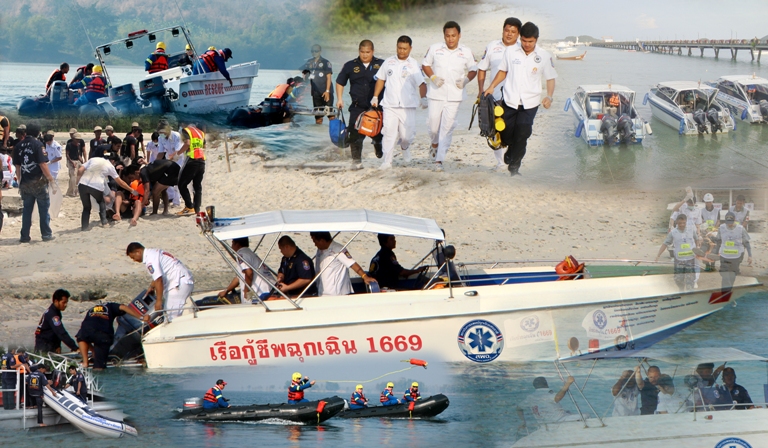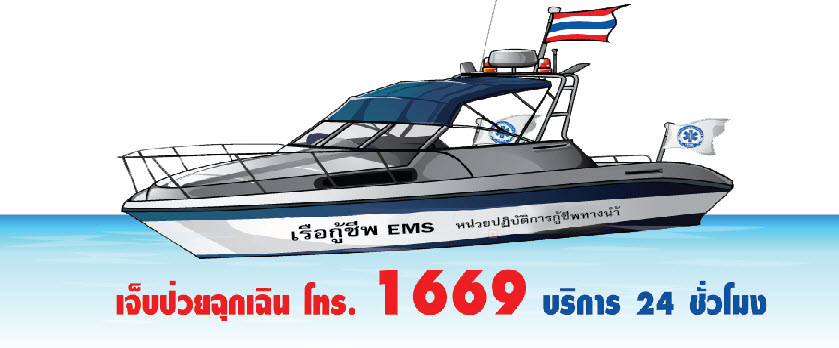|
How to Rescue a Drowning Victim!!!
The situation of this flood disaster has heavily affected 36 provinces with more than 3 million people. The floods have claimed lives in which 90 percent of the victims die from drowning or rescue drowning people.
Therefore, it is important to know the life-saving techniques. The most important thing to do is to “be conscious, stay focused and not to be reckless.”

The 4 simple rescuing methods: Reach – Throw – Paddle – Drag
The basic technique is to reach out an object to the victims such as long piece of cloth, belt, loop, sturdy piece of wood or wooden hooks. Then throw floating objects to assist the victim to hold on to, such as plastic tanks, lifebuoy, or auto-wheel rubber. Then throw a floating object tied to a rope to assist the victim, and then drag them to safety. This technique proves to be a safer way for the rescuer to rescue the victim because the rescuer is still on shore or shallow waters.
Jumping in the water to help and rescue may not be a safe way because many people have drowned from this. It requires carefulness and rescue-training experiences. Therefore, the correct way is to bring rescue object and tools such as lifebuoy, foam planks or life jacket. When reaching near the drowning victim, reach out or toss floating objects to assist. Never attempt a direct rescue of a conscious drowning victim without proper training. This is because, in a panic, drowning victims are likely to claw at rescuers at all cost which can make both rescuers and victims drown together. If the drowning victim tries to claw, immediately swim a little away then rescue, or, reach the victim by boat and reach the victim with something floatable and rigid to hold on to then pull him or her back.
For the conscious, not-panicked and know-how-to-swim victims but are exhausted or have cramps in water, they can be rescued by swimming out to reach and drag them to safety, for which direct rescue of not-panicked victims is not considered as being too dangerous for rescuers. On the other hand, rescuing panicked victims requires special skills such as performing across-chest technique; get behind the victim and hold him or her with your right arm over his or her right shoulder and across the chest, with your right hand gripping the front of his or her left armpit. While performing across-chest technique, swim in sidestroke position – it is a very tiring and dangerous position. For rescuing unconscious victims, swim out to reach and drag the victim in which the victim’s face, mouth and nose must stay above the water surface so that they can breathe.
The important thing that the rescuer should know is how to apply first aid into practice before transferring the victim to the hospital. If the pulse or breathing of the victim cannot be detected, perform cardiopulmonary resuscitation (CPR) immediately; press the center of the chest at least 1 – 1.5 inches deep at a rate of 100 times per minute by performing the switch between 30 times per cycle of chest compressions and mouth-to-mouth 5 cycles
The rescuer shall provide breaths to the victim immediately by exhaling into the subject’s mouth (mouth-to-mouth). Time should not be wasted in attempting to remove water from the victim’s lungs or mouth or by other means, such moves can delay CPR and support of airway and ventilation. If possible, breaths should be provided to the victim before bringing him or her on shore or shallow waters. If providing breaths through CPR doesn’t work because the victim’s stomach is filled with water, perform this technique immediately; lay the subject on his or her front, then place your hands under the subject’s abdomen and lift it up, this process can help remove water through the victim’s mouth. After performing this, then carry out the CPR.
If the victim can breathe, turn the head to the back to allow water to flow out through the mouth. Keep the victim warm with a blank and do not provide or water through the victim’s mouth. Monitor the victim until help arrives to transfer the victim to the hospital. All victims in serious or mild condition shall receive treatment at the hospital. If the victim is found to have stopped breathing, breaths should be provided mouth-to-mouth on the way to the hospital, do not lose hope, do not stop rescuing and do not stop giving breaths.
The general public can obtain the emergency medical service or if any emergency victim is found to have an accident, falling into waters or drowning, call 1669, this free 24-hr emergency helpline is there to assist all people.

|